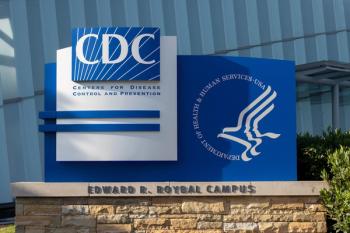
- Medical Economics January 2023
- Volume 100
- Issue 1
Winter Bootcamp: Multifamily investing made simple
Add multifamily real estate investing to your portfolio
For the video of this Bootcamp session, click
INTRODUCTION
With inflation at all-time highs and stock market returns struggling compared with recent years, physician investors are looking for new investment opportunities to grow their portfolios. One possibility that offers long-term growth plus passive income is investing in multifamily properties. By pooling money with other investors, physicians can participate in an investment through which an underperforming property is purchased, renovated and income boosted through a proven process.
The investor makes money from monthly returns — rents — and on the equity when the property is eventually sold. And the physician doesn’t have to actively manage anything.
This type of investment is different than a real estate investment trust (REIT), which has its own advantages for income and taxes, and gives the physician an alternative to the stock market roller coaster while providing the opportunity to invest in a segment of the real estate market that has proven resilient, even in the toughest economic times.
LEARNING OBJECTIVES
- Introduce hands-off real estate investing for physicians.
- Understand how to be an investor, not a landlord.
- Build monthly cash flow and tax advantages.
MEET THE PANELISTS
Travis Watts
Director, Investor Education
Ashcroft Capital
Travis Watts, a full-time apartment investor and the director of investor education at Ashcroft Capital, reveals how physicians, busy professionals and business owners can invest in multifamily real estate without being a landlord or having to manage tenants. He offered an exclusive look into real estate private placements, monthly passive income, tax benefits and much more.
Building monthly cash flow through multifamily real estate investment
For physicians looking for an alternative to a chaotic stock market, investing in multifamily real estate might be a way to boost their portfolios. When a physician decides to invest in a multifamily real estate fund run by an investment firm, Travis notes that experts at the firm identify the deals, raise the capital needed and manage the business plan, meaning the physician doesn’t have to do any active management. For example, Ashcroft Capital identifies properties that are undervalued with a lot of potential.
“We purchase a property, we rebrand it, we renovate it — the clubhouse, the amenities, the units, the common areas — and we reposition these assets to sell to institutional buyers,” says Watts. “We come in, we modernize and make these units more efficient, and we sell to institutions.”
The investment fund might purchase a property for which rents are lower than the current market rate. After the renovation, rates can be increased because the property is now nicer, safer and a more accommodating place to live.
For example, a 200-unit property in which rates are raised by $50 per month results in $120,000 in new annual income. But this added income also increases the price the property would sell for to a new buyer, and in this example, it could yield an additional $2.4 million to the sale price.
Watts says the potential payouts are much greater versus just being a landlord.
“It’s a lot different game than buying a single-family home where you’ve got a great renter paying above-market rents in a great neighborhood,” says Watts. “Because guess what? If we have a slowdown, if your neighbors have foreclosures and start selling underneath the values that were there one year ago, your house effectively went down in value no matter what you’re doing to it.”
The goal in multifamily real estate investing is to have an asset besides the stock market to diversify a portfolio with better tax benefits than a REIT.
“In most cases with REITs, you’re getting ordinary dividends, and that’s just tagging on to your overall active income tax bracket — and you’re just paying heavy taxes,” Watts says. “These private placements have great tax benefits.” Thanks to the depreciation of the real estate and the assets, it can be more than the distributions from the fund, meaning that in some cases, it can be a tax-free investment.
Watts says that the monthly cash flow can help enhance a physician’s lifestyle, pointing out that even $200 of passive monthly income can equal a house cleaner or a lawn service, which can make life that much easier.
“At the next level, it could be taking an extra vacation or two a year and being able to do something fun with the family,” he says.
Multifamily real estate also has a track record of performance, even during tumultuous economic times. During the Great Recession, Watts points out, national vacancy rates for multifamily properties were about 10%, and within two years, they were down to 7%. Properties with government-backed lending agencies had a default rate of less than 1% in that time period. During difficult financial times, these real estate funds can be a way to offset stock losses.
“With stocks down about 30% this year, just imagine if you had something that was constantly paying you on a monthly basis, 6%, 7%, 8%, 9% a year,” says Watts. “You’d be down that much less and have a buffer of that percentage. If the renters keep paying rent, the price of the real estate can be secondary in the short term (while you’re) waiting for the recovery to happen.”
Watts adds that with vacancy rates declining — because of fewer places for renters to choose from — and a projected 8% average increase in rent growth for 2022, the market is looking positive for multifamily real estate investments in the future.
Solutions & takeaways
- Invest in multifamily properties as a stock market alternative.
- Build your monthly passive income with minimum effort.
- Achieve growth potential even in a
down market. - Avoid market volatility with a proven investment class.
- Help inflation-proofyour portfolio.
Articles in this issue
almost 3 years ago
The top administrative challenges and what to do about themalmost 3 years ago
How physicians can find the right attorneyalmost 3 years ago
Now is the time for active portfolio managementalmost 3 years ago
Where do you want to be in 2023?almost 3 years ago
Medical professional liability insurance - what you need to knowNewsletter
Stay informed and empowered with Medical Economics enewsletter, delivering expert insights, financial strategies, practice management tips and technology trends — tailored for today’s physicians.


















